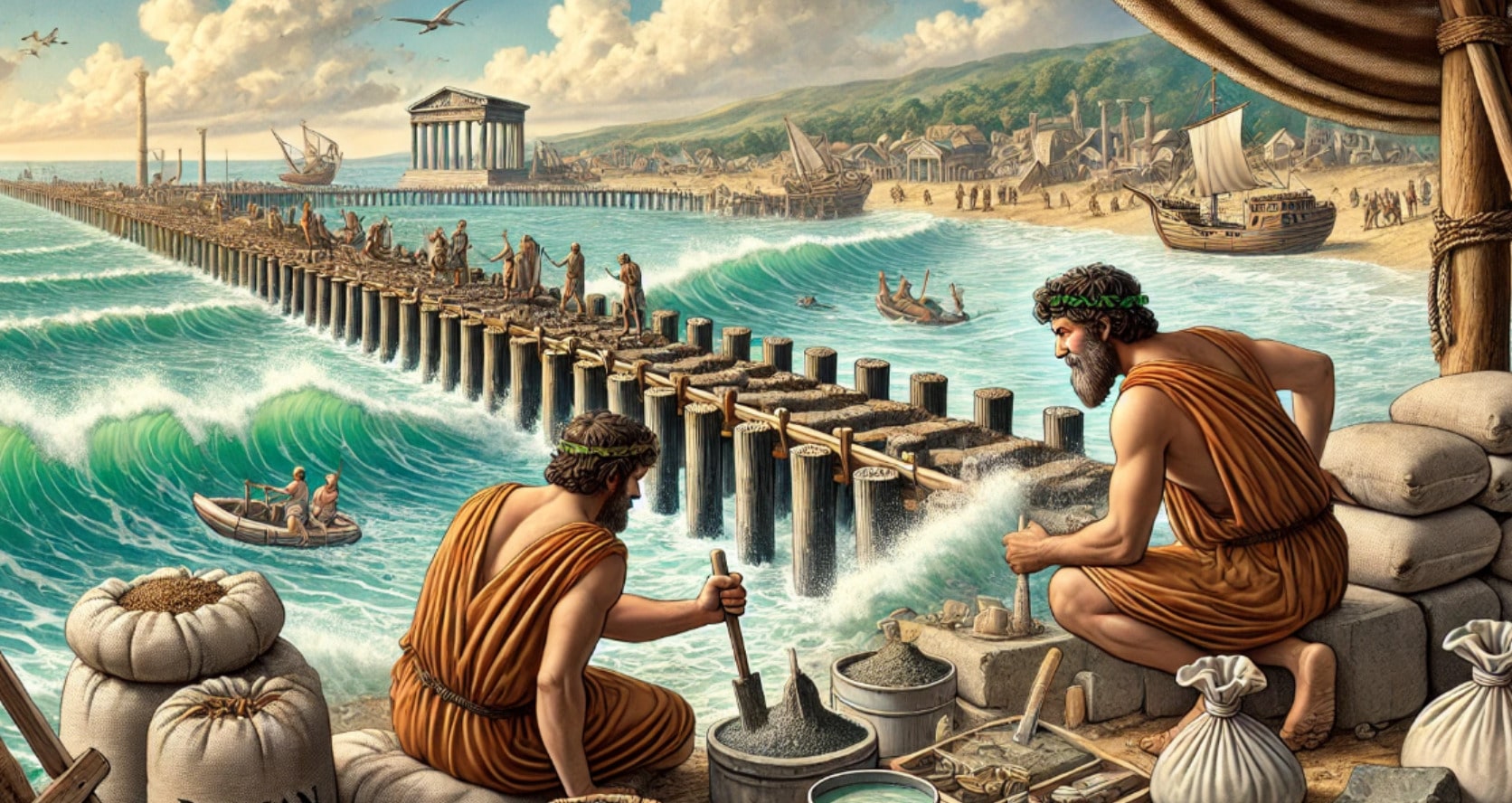Roman underwater concrete, an architectural innovation of ancient Rome, has withstood the test of time in structures like ports, piers, and breakwaters. Its durability and resistance to saltwater continue to surprise modern scientists and engineers.
How did the Romans create such a resilient material that grows stronger over time? This article explores the secret of its formula, its unique chemical reactions, and the relevance of this material in modern construction.
A Dialogue Between Two Roman Engineers of the Time, Gaius and Lucius
Both are working on the construction of a major port…
Gaius: Lucius, have you noticed how wooden structures don’t hold up well against the onslaught of saltwater? The waves wear them down in just a few years.
Lucius: Yes, Gaius, the Greeks have had the same problem. But I’ve been investigating volcanic ash from Pozzuoli. When mixed with lime and seawater, it seems we create something that doesn’t dissolve but instead hardens over time.
Gaius: Fascinating. How strong do you think it could be?
Lucius: I’ve seen this concrete grow more solid over the years. Even after decades in the water, it remains intact.
Gaius: So, if we use this mixture, we could build docks and ports that withstand the test of time, maybe even centuries.
Lucius: Exactly. And not only that, Gaius; if our theory is correct, this concrete will become even stronger as time passes. We’re about to make history.
Gaius: Then there’s no time to lose. Let’s put this formula into practice. Perhaps one day, engineers in the future will study us, wondering how we managed to build something so enduring.
What is Roman Underwater Concrete?
Roman concrete is a special mixture that enabled construction in marine conditions, thanks to its remarkable durability and resistance to saltwater.
The Romans used a blend of volcanic ash, slaked lime, stones, and seawater. By combining these ingredients, the concrete gained strength upon contact with water, developing durable compounds that protected structures from corrosion.
Key Ingredients and Chemical Reactions
Volcanic Ash (Pozzolana): Extracted from areas near volcanoes, like those in Pozzuoli, Italy, this reactive ash is essential for the properties of the concrete.
Slaked Lime: When mixed with volcanic ash, it produced a chemical reaction that strengthened the structure and made it waterproof.
Seawater: This ingredient played a crucial role. Instead of using fresh water, the Romans preferred seawater, which enhanced the chemical reactions.
Tobermorite and Phillipsite: These minerals, generated by the reaction of lime with seawater, strengthen the concrete.
Tobermorite forms under humid conditions and acts as a natural sealant, preventing saltwater infiltration.
Importance of Roman Concrete for Modern Construction
The study of Roman concrete has significant implications in modern engineering. Recent research suggests that Roman concrete could inspire more sustainable and durable materials, especially for underwater and maritime constructions.
Concrete that strengthens over time instead of degrading could reduce maintenance costs and extend the lifespan of infrastructures like bridges and docks.
How to Apply Roman Concrete Knowledge Today?
Modern engineers seek concrete formulas that mimic the hardening and resilience of Roman concrete. Instead of artificial components, the reactive nature of volcanic ash with lime and seawater demonstrates the potential of natural materials for building sustainable infrastructures.
Roman underwater concrete is a legacy of engineering that remains relevant today.
This ancient knowledge can contribute solutions to modern construction, bringing us closer to creating structures that, like those of the ancient Romans, defy time and nature.



